MORE GREATPAVILION TITLES
tap to read more



 www.anovabooks.com
www.anovabooks.com
For Adam
This book is dedicated to the memory of my best friend Adam Reynolds, one of the greatest people I ever had the pleasure of knowing.



contents

introduction
I am a self-taught cook who has learnt my trade from a handful of great books, my travels and my palate. I discovered many years ago that the most enjoyable fish dishes were the local specialities in any given place, for example bouillabaisse in southern France, fritto misto in Italy and lobster caldereta in the north of Menorca. I also found that the very simple preparation of anything fresh, from a grilled sole to a fish roasted with a few herbs, pleased me greatly. Successful seafood cookery relies upon two things freshness and simple preparation its as uncomplicated as that.
Supply is often an issue; the number of independent fishmongers is declining and we are left mainly with the supermarket counter to buy from. Of course, having been a fishmonger I would always advocate finding a good one near to you and supporting him, but the supermarket is perfectly acceptable.
Frozen seafood is also a good alternative to fresh. Much of the fish that you buy from the chilled counter in the supermarket will have been frozen anyway; its convenient if you wish to eat it on the day you buy it but dont refreeze it.
Unlike meat, most fish is fine if cooked from frozen which makes it the ultimate fast food. A frozen piece of fish cooked in a bag in the oven can produce excellent results with just a few added flavours. If we are to eat seafood sustainably, the acceptance of frozen seafood is a must, as much of it will have been fished from areas where stocks are well managed and fishing methods selective. When fish is caught a long way from land or distribution, to ship or fly it in fresh would make no sense, not least because complicated logistics put the product at risk of spoilage.
The provenance of seafood is as important as its freshness, and we should be buying fish from sustainable sources. Any species that has MSC (Marine Stewardship Council) certification will give you this surety, as should buying from local fishermen if you live near the coast. Naturally we are all concerned about the pressure commercial fishing puts on fish stocks, but we can still safely enjoy a wide variety of species as fisheries around the world adapt to the science of marine management. The cod and haddock fisheries in Norway are an example of what can be achieved when fishermen and scientists work together. The fisheries there produce some of the highest quality fish I have seen and they currently have the benefit of MSC certification.
This book will guide you through some straightforward cooking techniques based around the oven, the frying pan, the grill and the barbecue. There are also recipes for cured and raw fish. All the dishes are really simple to make just choose one that appeals and off you go.
When it comes to marrying flavours with fish, the simple rule is not too many flavours. Fish is great with sauces or salads that are a little acidic or piquant, made with ingredients such as capers, lemon, sorrel, limes, gherkins and mayonnaise. You will soon get the feel for flavouring and be creating your own combinations. These recipes make a great starting point.

on the grill

the barbecue grill
The best way of grilling fish is over a fire; it produces magnificent results and its easy to do. You can barbecue whole gutted fish and fillets with equal success. But I would advise against cooking white flaky fish such as cod, pollack and whiting directly on the barbecue grill (instead, these fish can be cooked in a double-lined foil and parchment parcel on the heat with a splash of wine, some butter and herbs). Some fish dont suit being cooked over a fire. Turbot, for instance, suits nothing better than roasting in a conventional oven. Ray, plaice, whiting and any other soft- or large-flaked fish, are best roasted, grilled or cooked in a bag.
tips for successful barbecuing
Use good-quality charcoal; it will burn for longer and give a better flavour.
Make sure the barbecue is hot before cooking; allow all flames to die down until you are left with white ash on the coals.
Brush the grill with a little oil.
Dry the fish well before putting it on the grill.
Using the breadcrumb and herb mixture (see ) to give the fish a light coating and interesting flavour.
If you are using a marinade, brush it on the fish as it grills.
If you are barbecuing a whole fish, tuck herbs such as rosemary, bay or thyme into the belly, and make slashes in the flesh to the bone this will help reduce the cooking time.
Try placing an upturned casserole dish over the fish and stoking the fire with herbs such as rosemary and thyme to achieve a lovely smoky, herby flavour.
If you are barbecuing an oily fish such as mackerel, rub a dry spice mixture onto the fish.
my favourite seafood for barbecuing
| Dover sole | Bream | Squid |
| John Dory | Gurnard | Lobster |
| Red mullet | Monkfish | Razor clams |
| Grey mullet | Sardines | Scallops |
| Sea bass | Mackerel | Prawns |
| Langoustines |
the flat grill and grill plate
In Spain, the standard method of cooking is on the flat grill or plancha. You can buy flat plates as well as ridged ones for your home hob. (Ive also used a big heavy-based frying pan and got it super-hot and had reasonable results.) There is a subtle difference between these cooking methods and the flavours youll get from them are quite distinct. When you use a ridged grill pan you are touching the fish with fine ridges of very hot metal, which has the effect of charring and giving it that lightly burnt barbecued flavour. On a flat grill the fish builds a crust that has a sweet flavour and golden look; this is an excellent way of cooking shellfish, squid and cuttlefish. When cooking on a flat grill there should be no sign of charring or the flavour will be spoiled. Virtually all seafood works well cooked on a flat grill, but if you are using a ridged grill avoid soft, white flaky fish, whose qualities are best exploited when roasted in an oven.


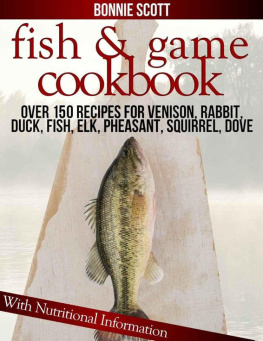
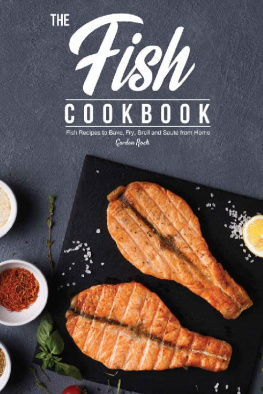
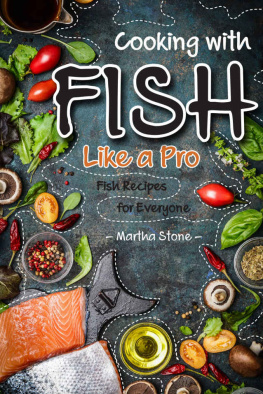
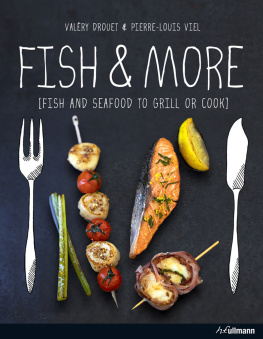
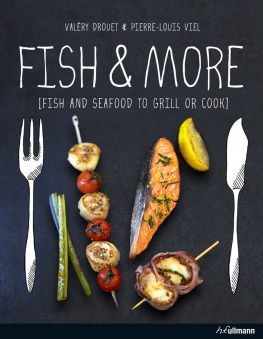
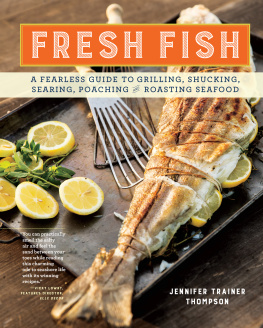
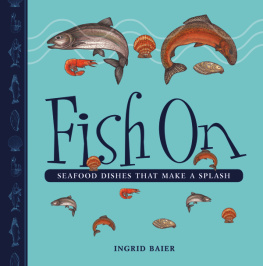




 www.anovabooks.com
www.anovabooks.com




